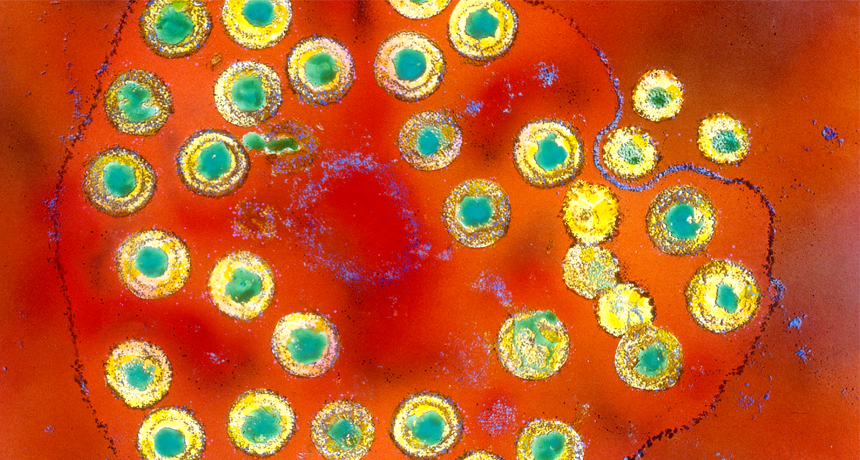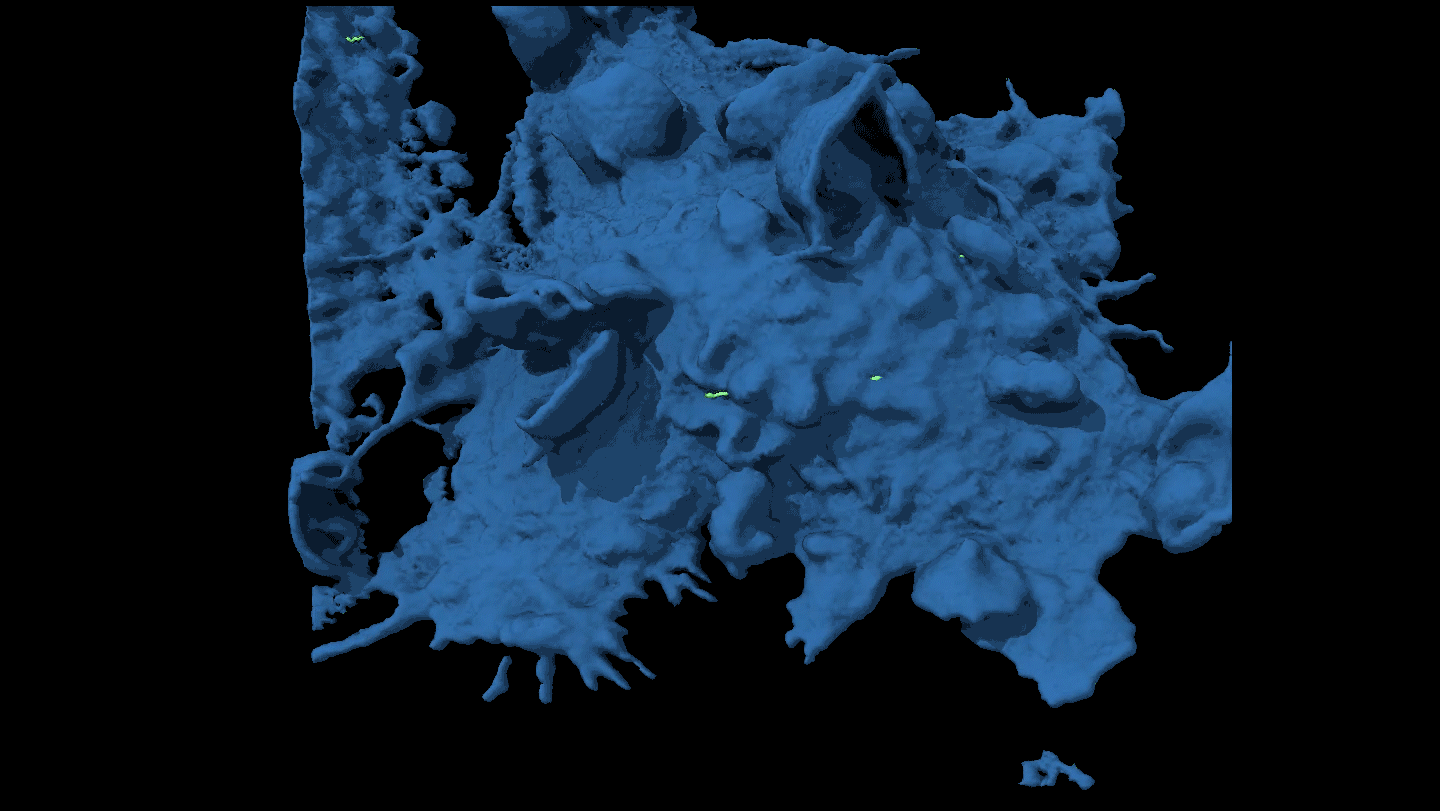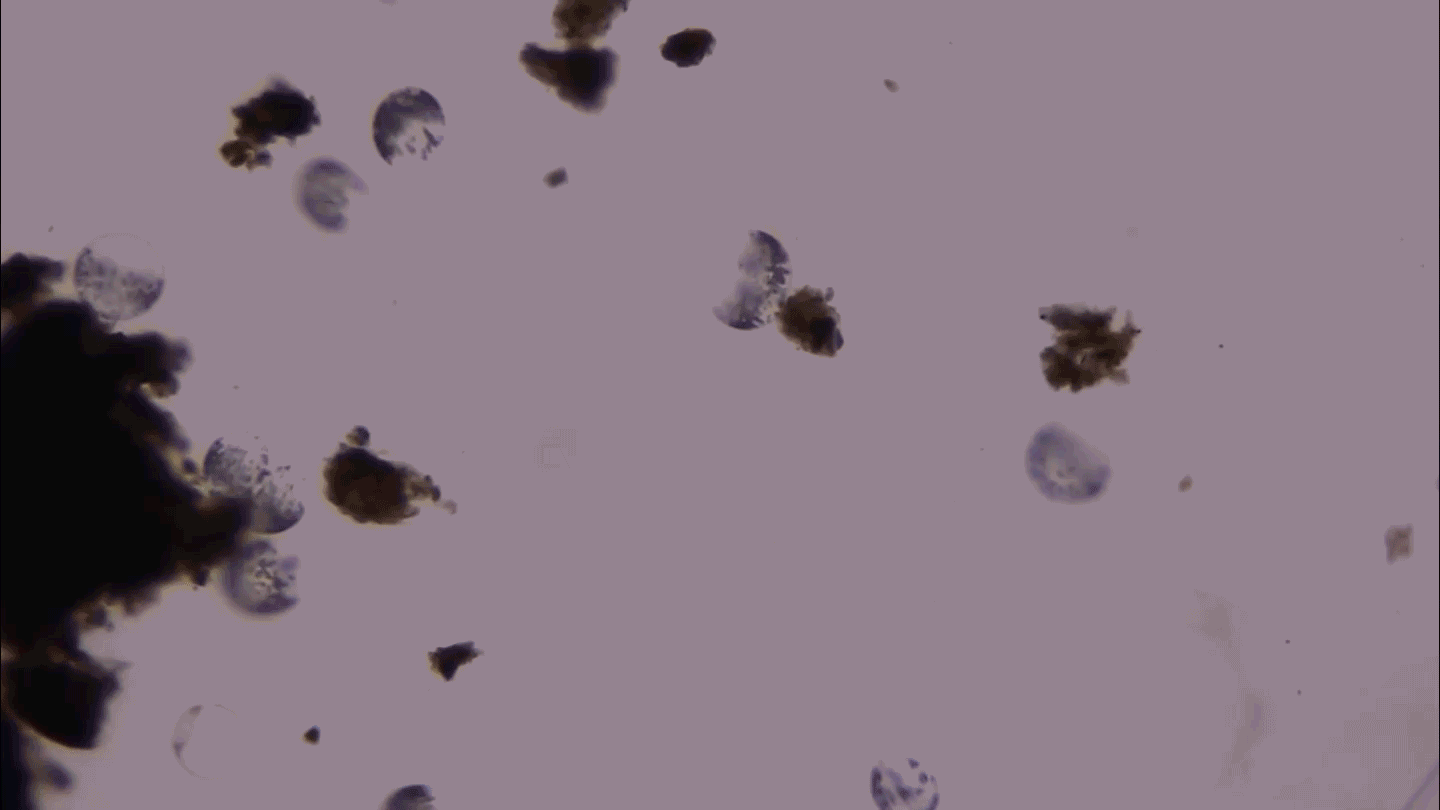Experimental herpes vaccine works in mice
Shot takes different tack from previous strategies

TAKING OVER This electron microscope image of an infected cell shows production of herpes simplex virus particles (green/yellow). An experimental herpes vaccine stops herpes in its tracks in mice.
Science Source







